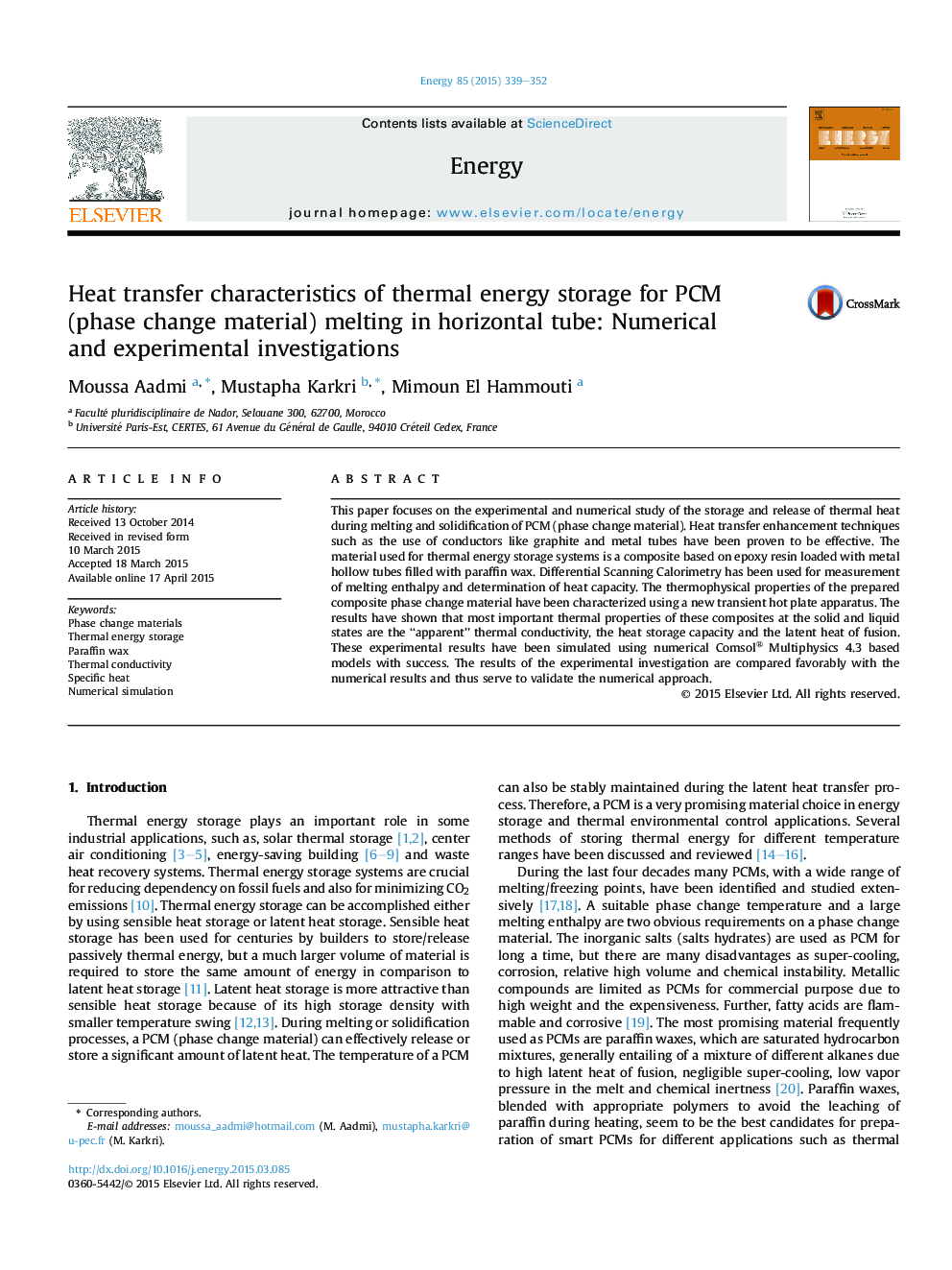| Article ID | Journal | Published Year | Pages | File Type |
|---|---|---|---|---|
| 1732082 | Energy | 2015 | 14 Pages |
•Phase change materials based on cylindrical used as new energy storage system.•Thermophysical properties and the melting process of composites were investigated.•All experimental results have been simulated using Comsol® Multiphysiques.•The ability to store and release the thermal energy were investigated.•Good improvement in the thermal conductivity of composites.
This paper focuses on the experimental and numerical study of the storage and release of thermal heat during melting and solidification of PCM (phase change material). Heat transfer enhancement techniques such as the use of conductors like graphite and metal tubes have been proven to be effective. The material used for thermal energy storage systems is a composite based on epoxy resin loaded with metal hollow tubes filled with paraffin wax. Differential Scanning Calorimetry has been used for measurement of melting enthalpy and determination of heat capacity. The thermophysical properties of the prepared composite phase change material have been characterized using a new transient hot plate apparatus. The results have shown that most important thermal properties of these composites at the solid and liquid states are the ‘‘apparent’’ thermal conductivity, the heat storage capacity and the latent heat of fusion. These experimental results have been simulated using numerical Comsol® Multiphysics 4.3 based models with success. The results of the experimental investigation are compared favorably with the numerical results and thus serve to validate the numerical approach.
